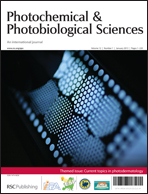Photodynamic therapy (PDT) with methyl aminolevulinate (MAL) has been suggested as a useful treatment option in a number of skin tumors, other than approved indications, and infections. However, evidence is poor because it is mainly supported by isolated case reports or small case series, often with conflicting results. To assess the effectiveness, tolerability and safety of off-label MAL-PDT in daily clinical practice in 20 Italian hospitals, a retrospective observational study of medical records of patients treated for off-label oncologic and infectious skin conditions was carried out. In all patients standard treatment options had been either ineffective, unacceptably toxic, or medically contraindicated. Clinical data from 145 patients were analyzed. Actinic cheilitis showed a complete remission (CR) in 27 out of 43 treated patients and CR was maintained at follow-up. CR was registered in 3 of 8, 5 of 8 and 10 of 17 treated patients who were affected by extra-mammary Paget's disease (EMPD), erythroplasia of Queyrat (QD), and invasive squamous cell carcinoma (SCC), respectively. Five out of 19 patients with cutaneous T cell lymphoma had a complete remission. Cutaneous B-cell lymphoma, malignant fibrous histiocytoma, mastocytosis and nevus sebaceous were not responsive. Warts were treated in 30 patients and 15 had a complete remission. However, periungueal and plantar lesions were much more responsive than flat and common lesions. Condylomata showed a CR in 2 out of 5 male patients but treatment was painful. Bowenoid papulosis showed only a partial improvement. Atypical mycobacteriosis and chronic cutaneous leishmaniasis were successfully treated. Submammary candidal intertrigo and interdigital intertrigo with Pseudomonas aeruginosa did not improve. Among off-label oncological uses of MAL-PDT, the therapy of actinic cheilitis was the most investigated and showed the best results. In addition, MAL-PDT was used successfully in the majority of patients with QD, EMPD and invasive SCC. Treatment of specific cutaneous infections was well tolerated and gave a good therapeutic result in a few patients, but it does not seem to give substantial advantages over conventional treatment options.


 Please wait while we load your content...
Please wait while we load your content...